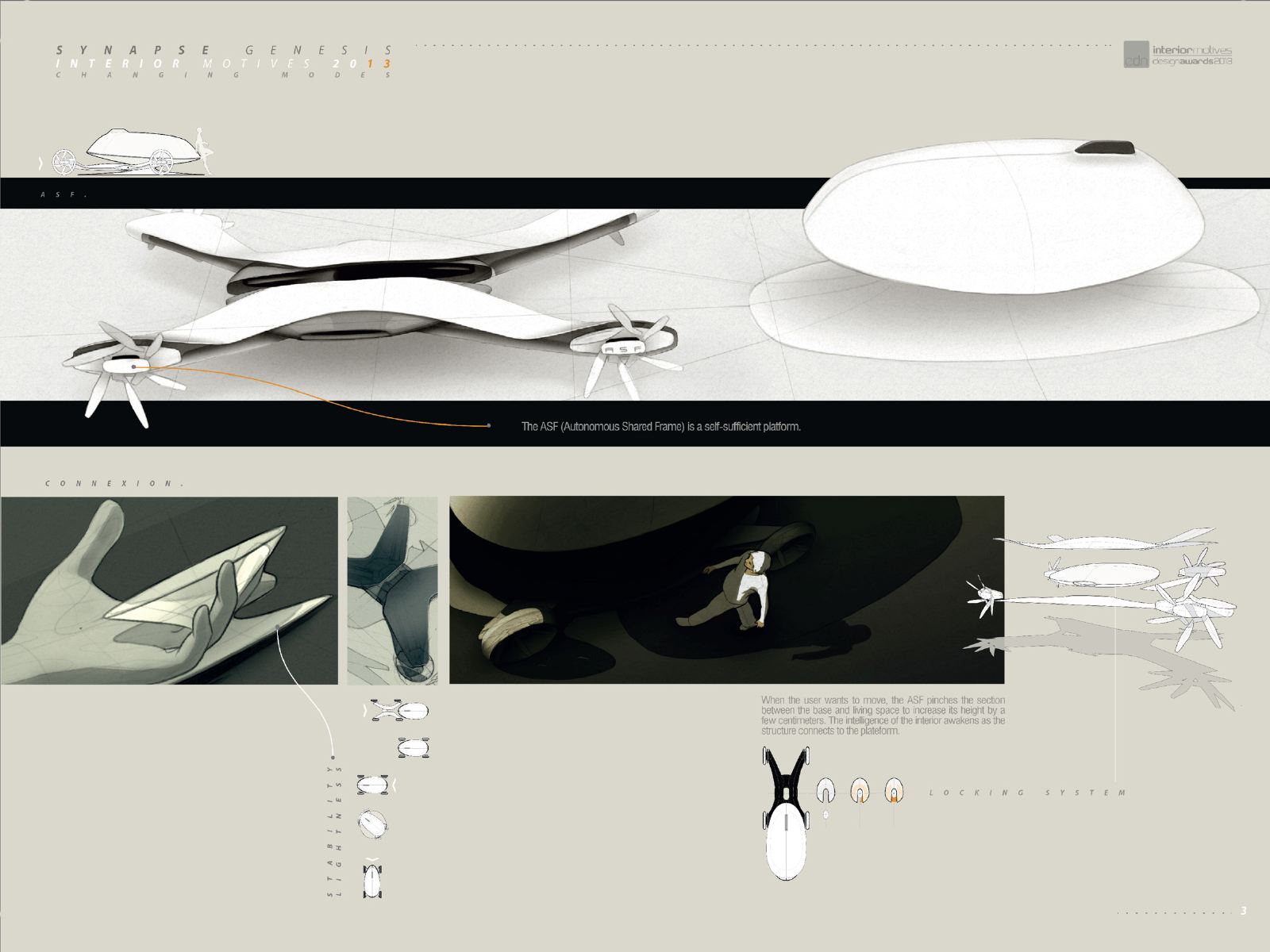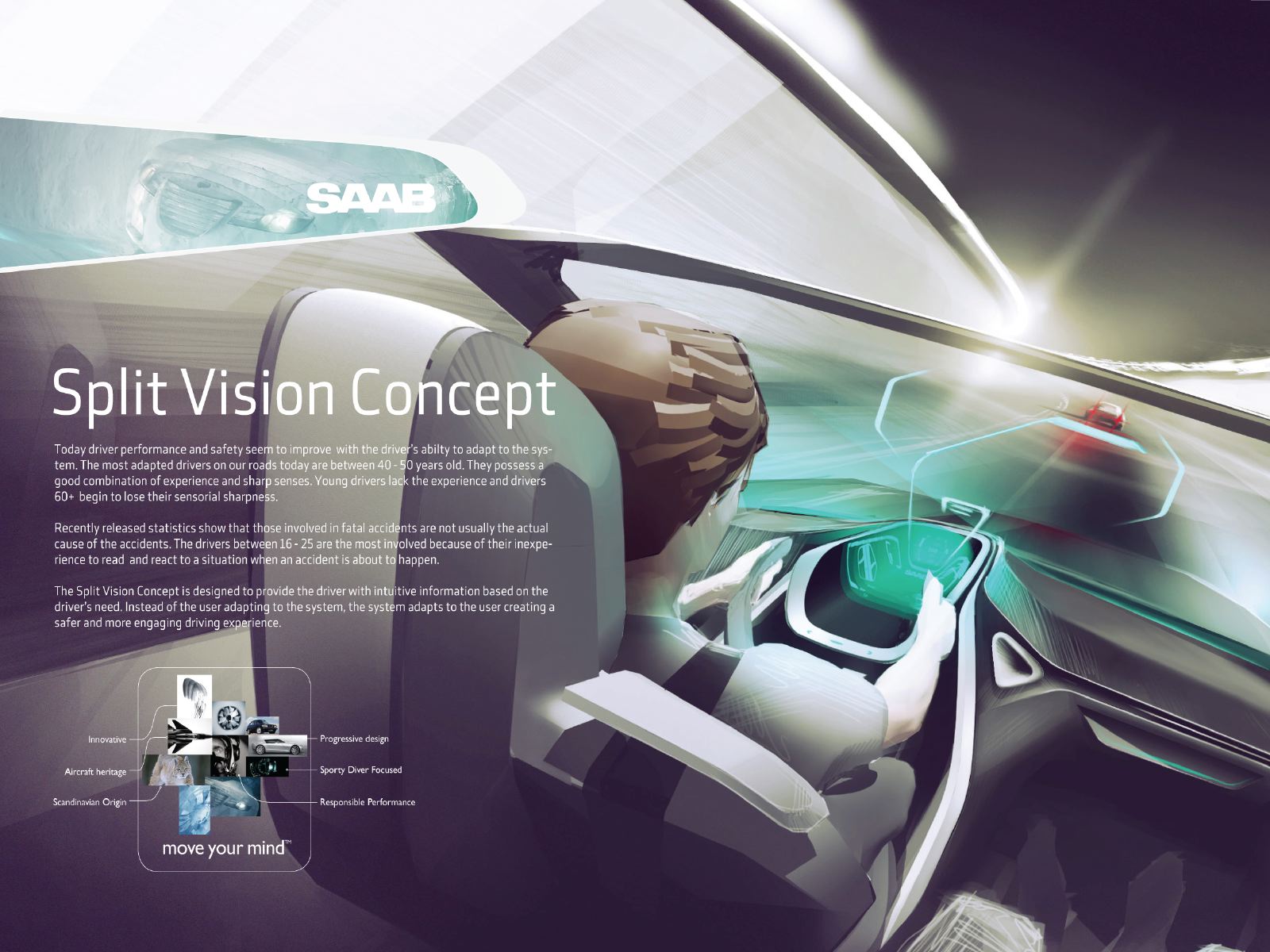



Earlier this evening, the world's top designers and automotive journalists gathered together at the Moon13 club in Frankfurt to watch sponsors Ford and Volkswagen reveal the 2013 Interior Motives Student Design of the Year: ‘Audi O Concept' by Nir Siegel, Cherica Haye and Hanchul Lee of London's Royal College of Art.
Launched in January of this year and themed ‘The Connected Car', this year's contest attracted hundreds of entries from students spread across every corner of the globe. And at a ceremony hosted by acclaimed designer Chris Bangle earlier today, the following talented young designers realized their dream of winning an award:
Best Ergonomics (Sponsored by Visteon) and Student Design of the Year
‘Audi O Concept' - Nir Siegel, Cherica Haye & Hanchul Lee (Royal College of Art, UK)
"The O Concept is not a normal car," claim its creators. And few would argue with them. Having scooped the Best Ergonomics category, this ‘wearable' electric vehicle concept - in which the driver wears a suit that's harnessed directly to the car's chassis - went on to win one of the biggest accolades in automotive design: the Interior Motives Student Design of the Year award.
The textiles the suit is crafted from are tailored not only to the driver's physique, but are also designed to act as an information transfer device between the single-seat, open-wheeled vehicle and its pilot. An integrated steering and throttle unit replaces a conventional steering wheel, and the suit is designed to stretch and tighten around the driver at higher speeds, reinforcing the connection between human and machine.
Ford's Director of Global Interiors, Amko Leenarts, called the concept "inspiring and innovative", while head of Audi interior design Enzo Rothfuss praised the young designers for devising a "perfectly fitted ‘interior' in a completely new way". A popular winner.
Best Eco Interior (Dinamica)
‘Synapse' - Sydney Hardy, Strate Collège (France)
Always a source of some debate, the discussions between the judges of what constitutes an ‘eco' vehicle this year led to the selection of Sydney Hardy's Synapse on-demand mobility system as the overall category winner. Designed to satisfy the ‘Changing Modes' competition brief, the Synapse is based on a self-sufficient Autonomous Shared Frame (ASF) around which the body adapts its shape according to use and need.
When moving from stationary to mobile, the car's dashboard opens out to provide a control system and the seat's structure deforms to support the passenger. Erika Tsubaki of Ford Design Strategy and Futuring praised its "engaging storyboard and high-quality concept illustration", while Volvo's Robin Page called it a "great connection of living space and technology". Hyundai North America chief designer Chris Chapman said, simply, "I want to live in this world".
Best Use of Technology (Volkswagen)
'Split Vision' - Erik Evers, Umeå Institute of Design (Sweden)
Split vision takes a fresh look at HMI design, proposing a system that adapts to the user rather than forcing the user to adapt to unfamiliar technology. At the heart of the interface is Microsoft's Kinect gesture recognition technology, which allows the 3D display - formed, like Saab's 9-X concept, from layered glass - to alter its configuration according to how and where the driver is sitting. Ford's director of interior design Scott Strong described the project as an "interesting and useful application of technology to address social needs", while Audi interior design boss praised Evers' "visionary approach to answering the questions faced by today's automotive industry".
Best Innovative Interior (Peugeot)
‘Kinectic' - Cyril Verbrugge & Arthur Guinet, Strate Collège (France)
Designed as a future taxicab proposal, Kinectic expands on the ‘Naked Road' approach to mobility systems by removing the information from exterior road signs and displaying it - either to passenger or driver, according to need - within the interior space. The space itself, meanwhile, was designed according to the ‘linear draft' sculptural approach of Russian constructivist sculptor Naum Gabo. The result is a strikingly different vehicle design that wears its technological innovation very lightly. David Woodhouse of Ford's Strategic Concepts Group praised its "great lightweight feel and clear diagrams", and Volvo's Robin Page expressed admiration at the way the designers "created a very light feeling with natural materials".
Next Page >































